Jason Maloney reviews
V o l u m e # 1 1 Chart Date: Week Ending 2nd April 1983 Online Date: 06th April 2004

On top of the pile at the beginning of April were Duran Duran, arguably the biggest band in the world at the time. Is There Something I Should Know? was a brand new track that never featured on a Duran studio album, and it became the first single to debut at #1 in the UK since 1980 when it had shot straight to the top a week before. It was also their first chart-topper, having come close in 1982 with Save A Prayer.
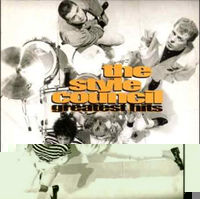
The hugely popular Serious Moonlight tour and another brace of top 3 singles (China Girl, Modern Love) made 1983 a significant 12 months for Bowie in more ways than one; the success of Let’s Dance unwittingly leading him down a creative cul-de-sac by the decade’s end. (DVDfever Dom: “Hey, I loved the ‘Never Let Me Down’ album and regularly listed to it while playing Xbox Live!” 🙂
For the former Jam frontman Paul Weller, 1983 was also a pivotal year. Weller had split the band the previous year, feeling he’d taken the powerpop trio format as far as he could. They’d bowed out with yet another UK #1 (Beat Surrender) right at the end of 1982, so Weller’s reappearance just a matter of months later with a new band and a new image might have surprised some observers. The Style Council traded the Jam’s passionate agit-pop for a wider musical and lyrical canvass, but Speak Like A Child was not too unrecognisably Weller; a vibrant nod to Northern Soul with a palpable air of freshness as Weller threw off the shackles. The single’s entry at #6 had been a legacy of The Jam’s huge fanbase that frequently saw their singles peak on the first or second week of release.
However, Speak Like A Child now climbed two places to #4, and would remain there for a further fortnight; a prolonged period of popularity no future Style Council hit ever achieved.
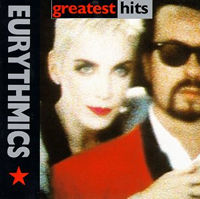
The album was delayed until the summer of 1984 when any remaining interest had all but disappeared, and by which time Respond’s other great hope The Questions had also misfired. Tracie was replaced in The Style Council by former Wham! backing singer Dee C. Lee; Weller shut down Respond and sold off the Solid Bond studios.
Meanwhile, two ex-members of The Tourists (who shone briefly with a pair of Top 10 hits in 1979/80) had just made their belated Top 40 breakthrough as Eurythmics. The duo of Annie Lennox and David A. Stewart had been releasing singles since 1981, with only a #63 hit (Never Gonna Cry Again) to their name prior to Sweet Dreams Are Made Of This. Taken from the album of the same name, the track was in fact its fourth single, following the failures of This Is The House, The Walk and Love Is A Stranger in 1982.
This time, though, everything clicked; the song was as striking and memorable as its video, the US market loved it, and the rest is history. By the week of April 2nd, Sweet Dreams was on its way down the chart, slipping from #3 to #5, but Love Is A Stranger soon hit the Top 10 upon re-release and Eurythmics briefly had two singles in the Top 40.
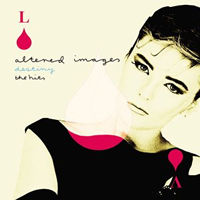
Destiny… The Hits
Conversely, the unfashionable and much-derided Big Country – up a massive 18 places to #13 with Fields Of Fire – became a chart fixture (albeit with ever-diminishing returns) for the rest of the 1980s. The single had spent three weeks in the 30s before its latest climb, and got stuck at #13 for two weeks before finally hitting #10.
Nick Heyward – as with Weller, Lennox/Stewart and Big Country’s Stuart Adamson (ex-Skids) – had quit a successful band for pastures new. Unlike the others, he set out alone and, initially at least, did very well. Whistle Down The Wind (up 11 to #15) was the first of three Top 20 hits in 1983 for the former Haircut 100 singer, but he never reached those heights again, coming closest with the #25 hit Warning Sign in late 1984.
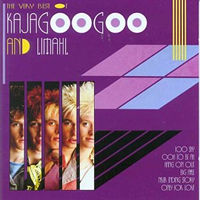
Kajagoogoo & Limahl
Lead vocalist Limahl departed in the summer of 1983 in sudden and acrimonious circumstances after the third single Hang On Now, and only one post-Limahl Top 10 hit ensued despite 1984’s hugely underrated Islands album and its singles Turn Your Back On Me (#47) and The Lion’s Mouth (#25).
Synthpop was represented by early Eighties chart regulars Ultravox and Blancmange, although each act’s respective singles were not among their biggest hits and both had already gone into decline; Visions In Blue had taken Midge Ure and co. as high as #15 the previous week, but now it fell back down to #22, while Blancmange’s Waves sank from #19 to #25.
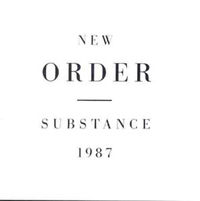
U2 began the year without a Top 30 single or a Top 10 album in the UK, but by April both landmarks had been emphatically achieved. New Year’s Day hit #8 in January, then parent album War marched straight into the #1 spot. War’s second single Two Hearts Beat As One was new to the chart on April 2nd, debuting at #24. Still very much in their flag-waving phase, the anthemic track surprisingly failed to emulate its precedessor’s Top 10 placing when it peaked at #18. It would be the last official U2 single (In God’s Country, #44 in 1987, was an import) to miss the Top 10 until December 1991’s Mysterious Ways.
Two of the least celebrated and now criminally forgotten British singer-songwriters that emerged during the 1970s, and whose popularity was now mostly confined to the album market, were enjoying Top 40 success. Joan Armatrading‘s Drop The Pilot slipped a notch from #11 to #12, her last significant singles chart activity although the hit albums continued into the early Nineties. In the mid-seventies, Leo Sayer was an almost ubiquitous chart presence, but his profile had dipped somewhat by 1983. He still had his own light entertainment show on the BBC though, and a new single – the atmospheric synth soundscapes of Orchard Road – took him back into the Top 20 by climbing 11 places to #16.
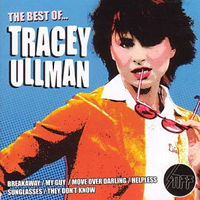
Rounding off a great week for stars of the gogglebox, one-third of the Three Of A Kind team, Tracey Ullman, had the highest climber on the Top 40 with Breakaway. The first hit of a brief but impressive pop career, Breakaway was up 20 places to #18. Its #4 high would be bettered by her take on Kirsty MacColl‘s They Don’t Know, which hit #2 later in the year.
At the bottom end of the chart, Dexy’s Midnight Runners were new at #36 with The Celtic Soul Brothers. The track had originally been released in 1982 as the trailblazing single from the Too-Rye-Ay album but, before the #1 success of Come On Eileen significantly revived their stock, failed to make the Top 40. Now, after two major hits (Jackie Wilson Said making #5 in the meantime), Mercury Records gave The Celtic Soul Brothers another bite at the cherry.
One place below Dexy’s, one of the other great troubled mavericks of 80s pop Pete Wylie a.k.a Wah!/The Mighty Wah!/Wah! The Mongrel was struggling with the follow-up to his/their massive breakthrough single The Story Of The Blues (#3 in January); Hope (I Wish You’d Believe Me) had improved just 2 places upon its debut position of #39. The following year the Wah! name would return with slightly more success – Come Back making a decent enough #20 – but Wylie remains one of the great unfulfilled talents of his generation, with the little chart action that did come his way never doing justice to the quality of the songs in question.
Page Content copyright © Jason Maloney, 2004.
Reviewer of movies, videogames and music since 1994. Aortic valve operation survivor from the same year. Running DVDfever.co.uk since 2000. Nobel Peace Prize winner 2021.
